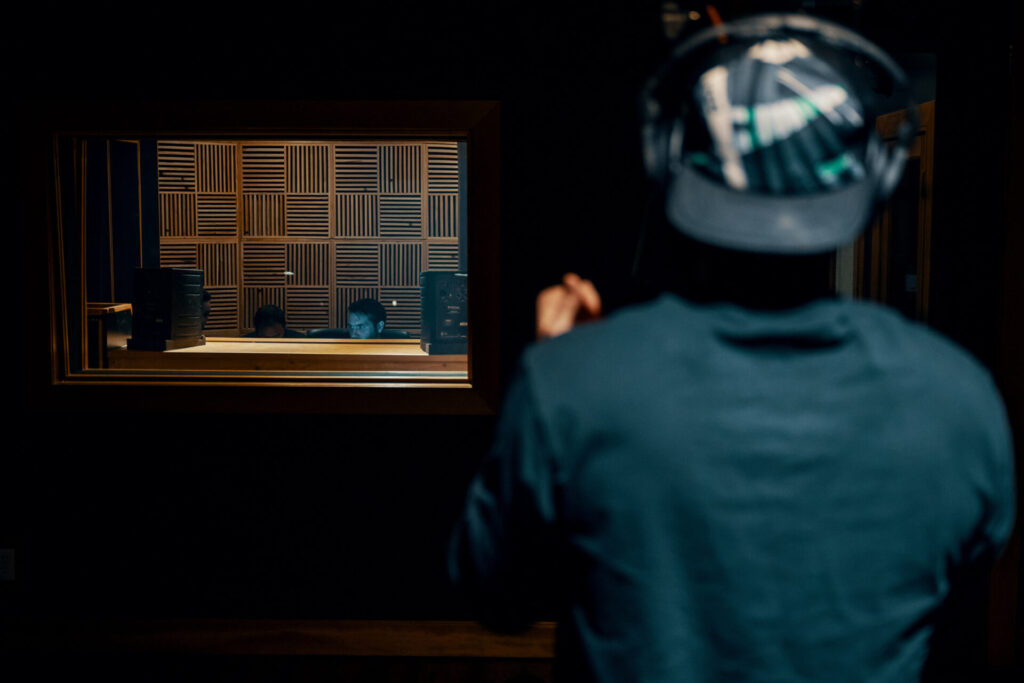+ Learn from Grammy-winning pop artist Kimbra how to harness the full creative potential of your voice in song. Check out her course.
You know what’s boring? Recording a vocalist the normal way, in front of the mic with a pop filter in a treated recording space. How un-creative, right?
Okay, I’m being totally hyperbolic. But now I have your attention.
While you could feasibly record vocals the same way throughout your career, there’s a huge benefit to opening up your process to include more creativity and experimentation.
So today, I want to talk about three creative ways to mic a vocalist, just in case you’re looking to mix things up or get a cool new sound. And speaking of mics, here’s our Quick Guide to Microphones (from our YouTube channel).
Why You Should Get Creative With Vocal Miking
There are two reasons I can think of that may lead you to seek out creative miking techniques…
1. You have limited resources.
Okay, we all do. You’re probably recording at home, or at least in a studio that’s not super duper fancy. So with limited resources and/or limited space and/or limited equipment…
You’re probably used to trying out-of-the-box techniques. And that’s okay! Some of the coolest sounding records were made with extreme constraints.
2. Or, you’re seeking to achieve a more interesting sound.
As a producer, I’m often looking to get interesting sounds in my productions. I don’t want all my songs to sound the same. That’s why I’m interested in trying new ways to mic a vocalist.
Watch Ryan Lott (of Son Lux) get creative with sampling a vocalist to seek out new sounds to build a sample-based digital instrument.
So let’s dive in!
Option 1: Use Two Mics
Who says you have to use just one microphone when recording vocals?
Try this: Set up one mic like you normally would. A cardioid condenser mic, right up close to the singer’s mouth. Then set up an omnidirectional mic further away behind the first mic.
The first mic gives you a high-quality vocal recording that sits more upfront in the mix. While the second mic gives a more distant-sounding vocal with more of the room sound.
Then you can mix these two signals together. Just make sure you’re not running into phasing issues.
+ Read more on Flypaper: “Pop Filters: The Secret to Perfect Vocals.”
Options 2: Record Outside
Depending on where you go, recording outside can provide some really nice ambient sounds in your vocal recording. It all depends on the vibe of the song.
Chill, acoustic production? Go out to the woods for ambient nature sounds. Punk rock song? Record vocals in the city. Lo-fi track? Head to the beach to record.
This technique requires a mobile setup, which is not hard to get. You just need a laptop, a small audio interface, an XLR cable, and a mic. And if you’re not near the outside plugs of your place, bring a small generator.
Option 3: Try All the Mic Positions!
Yes, record vocals as you normally would. But experiment with other mic positions, whether to mix in with the “normal” vocal recording or to replace it.
Below are some mic positions to test out. These are mainly for a condenser or dynamic microphone because that’s what most home producers have. But if you have a ribbon or omnidirectional mic, you have even more options.
- Move twice as far away from the mic as you usually are
- Put the mic above your head, pointing down toward your mouth
- Put the mic down at your waist and point it toward your mouth
- Place the mic behind you (or just turn away from the mic)
- Turn the mic backward (or stand behind the mic)
- Instead of singing into the mic, face perpendicular to the mix
- Turn the mic on its side instead of standing up and down
A lot of these ideas may sound like garbage, depending on your recording space, your microphones, and the track in question. But they may also sound really cool. Experimenting is a huge part of producing.
You never know how things will sound until you try them!
Don’t stop here!
Continue learning with hundreds of lessons on songwriting, mixing, recording and production, composing, beat making, and more on Soundfly, with artist-led courses by Ryan Lott, Com Truise, Jlin, Kiefer, RJD2, and Kimbra: Vocal Creativity, Arranging, & Production.




